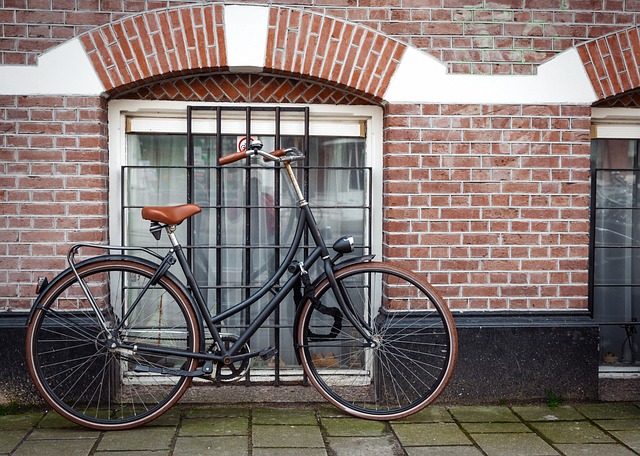Public Transportation in the Netherlands: A Complete Guide

The Netherlands is renowned for its efficient and eco-friendly public transportation system, which plays a crucial role in connecting cities, towns, and villages across this small yet vibrant European country. Whether you’re a tourist exploring Amsterdam’s canals or a resident commuting daily to work, understanding how the Dutch public transport network operates is essential for maximizing your experience. In this comprehensive guide, we’ll delve into the various modes of transportation available, ticketing systems, travel tips, and everything else you need to know about navigating the Netherlands by public transit.
1. Overview of Public Transportation in the Netherlands
The Dutch public transportation network is one of the most advanced in Europe, combining trains, buses, trams, metros, ferries, and even water taxis to provide seamless connectivity throughout the country. The system is managed by several operators under the umbrella of Nederlandse Spoorwegen (NS) for rail services and local authorities for regional bus and tram networks. This integration ensures that travelers can easily switch between different modes of transport using a single ticket.
Key features of the Dutch public transport system include:
- Extensive coverage of urban and rural areas.
- High frequency of services, especially during peak hours.
- Eco-conscious initiatives such as electric buses and hybrid trams.
- User-friendly digital platforms for planning journeys and purchasing tickets.
2. Modes of Transportation
A. Trains (Treinen)
Trains are the backbone of the Dutch public transport system, operated primarily by NS. They offer fast and reliable connections between major cities like Amsterdam, Rotterdam, The Hague, Utrecht, and beyond. There are two types of train services:
- Sprinter : Stops at every station; ideal for shorter distances.
- Intercity : Faster with fewer stops; perfect for long-distance travel.
Tickets for trains can be purchased online through the NS website or app, at ticket machines located at stations, or via contactless payment methods. It’s worth noting that some international trains, such as Thalys and Eurostar, require separate bookings.
B. Buses (Bussen)
Local and regional buses complement the train network, providing access to smaller towns and villages where trains don’t reach. Major operators include Connexxion, Arriva, and Qbuzz. Many bus routes also connect directly to train stations, making transfers smooth and hassle-free.
Bus fares vary depending on the distance traveled, but many passes, such as the OV-chipkaart (explained below), cover both buses and trains within specific zones.
C. Trams and Metro
Cities like Amsterdam, Rotterdam, The Hague, and Utrecht have extensive tram networks that serve as their primary means of urban transport. Additionally, Rotterdam operates a metro system that extends into neighboring municipalities. Both trams and metros are integrated with other forms of public transport, allowing passengers to use the same tickets for seamless travel.
D. Ferries and Water Taxis
For those traveling along the coast or across rivers, ferries and water taxis are excellent options. These services are particularly popular in areas like IJsselmeer and Rotterdam, where waterways play an important role in connectivity.
3. Ticketing Systems
A. OV-Chipkaart
The OV-chipkaart is the heart of the Dutch ticketing system. This rechargeable smart card allows users to pay for all forms of public transport nationwide. There are three types of cards:
- Anonymous Card : Ideal for occasional travelers; no personal information required.
- Personal Card : Offers discounts and subscriptions for frequent commuters.
- Disposable Card : Preloaded with credit for short-term visitors.
To use the OV-chipkaart, simply check in at the start of your journey and check out upon arrival. Fares are automatically deducted based on the distance traveled.
B. Day Passes and Travel Cards
If you plan to explore multiple destinations in a day, consider purchasing a day pass. Options include:
- Dagkaart : Unlimited travel on all public transport for 24 hours.
- Groningen-Delta Tarief : Discounted rates for travel within designated zones.
- Railrunner : Special deals for students and young adults.
For longer stays, subscription plans like the “Vrije Vervoersproduct” (free travel product) or reduced-rate monthly passes may save you money.
4. Planning Your Journey
Planning your trip has never been easier thanks to modern technology. Use these tools to ensure a stress-free experience:
- 9292.nl : The official journey planner for the Netherlands, offering real-time updates and route suggestions.
- NS App : Provides train schedules, live departure boards, and ticket purchase options.
- Google Maps : Incorporates public transport data for door-to-door directions.
Always double-check departure times and platform numbers before boarding, as delays or changes can occur.
5. Tips for Travelers
- Travel During Off-Peak Hours : Avoid rush hour congestion by traveling early in the morning or late in the evening.
- Respect Local Customs : Keep noise levels low on trains and buses, and remember to give up seats to elderly or disabled passengers.
- Stay Connected : Download offline maps and apps to stay informed while exploring remote areas.
- Explore Beyond Cities : Use public transport to discover picturesque countryside locations like Giethoorn or Kinderdijk.
6. Sustainability and Innovation
The Netherlands takes pride in its commitment to sustainability. Over 70% of the country’s trains run on renewable energy, and electric buses are increasingly replacing traditional diesel models. Moreover, innovations like bike-train combinations allow cyclists to bring their bicycles aboard certain trains, promoting multimodal travel.



